
The 94th Aero Squadron was the United States Army Air Service designation for the current 94th Fighter Squadron that fought on the Western Front during World War I.

The 95th Aero Squadron was an Air Service, United States Army unit that fought on the Western Front during World War I. It was the first American pursuit (fighter) squadron to fly in combat on the Western Front, beginning on 8 March 1918.
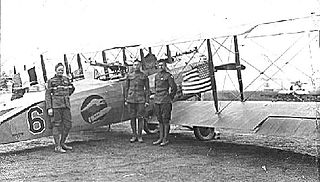
The 12th Aero Squadron was a United States Army Air Service unit that fought on the Western Front during World War I.

The 13th Aero Squadron was a United States Army Air Service unit that fought on the Western Front during World War I.

The 99th Aero Squadron was an Air Service, United States Army unit that fought on the Western Front during World War I.

The 103rd Aero Squadron was an aviation pursuit squadron of the U.S. Air Service that served in combat in France during World War I. Its original complement included pilots from the disbanded Lafayette Escadrille and Lafayette Flying Corps. One of those pilots, Paul F. Baer, became the first ace of an American unit in World War I.

The 28th Aero Squadron was a United States Army Air Service unit that fought on the Western Front during World War I.

The 93d Aero Squadron was an Air Service, United States Army unit that fought on the Western Front during World War I.

The 104th Aero Squadron was an Air Service, United States Army unit that fought on the Western Front during World War I.
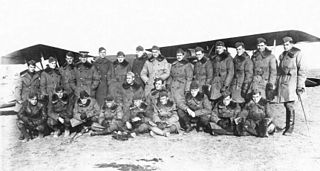
The 139th Aero Squadron was a United States Army Air Service unit that fought on the Western Front during World War I.

The 147th Aero Squadron was a United States Army Air Service unit that fought on the Western Front during World War I.

The 22nd Aero Squadron was a United States Army Air Service unit that fought on the Western Front during World War I.

The III Corps Observation Group was a United States Army Air Service unit that fought on the Western Front during World War I as part of the Air Service, First United States Army. It was demobilized on 12 May 1919. There is no modern United States Air Force unit that shares its lineage and history.
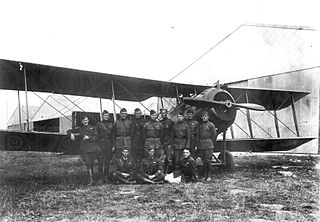
The V Corps Observation Group was an Air Service, United States Army unit that fought on the Western Front during World War I as part of the Air Service, First United States Army. It was demobilized in France on 15 February 1919. There is no modern United States Air Force unit that shares its lineage and history.

The IV Corps Observation Group was an Air Service, United States Army unit that fought on the Western Front during World War I. It was demobilized on 12 May 1919. There is no modern United States Air Force unit that shares its lineage and history.

Foucaucourt Aerodrome was a temporary World War I airfield in France. It was located 4.3 miles (6.9 km) ESE of Foucaucourt-sur-Thabas, in the Meuse department in Lorraine in north-eastern France.
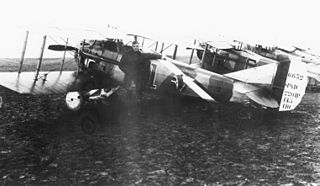
Lisle-en-Barrois Aerodrome was a temporary World War I airfield in France. It was located on the plateau north of the commune of Lisle-en-Barrois, in the Meuse department in north-eastern France.
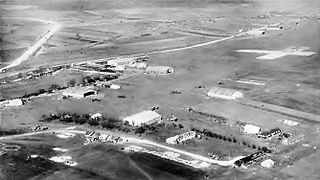
Souilly Aerodrome was a temporary World War I airfield in France. It was located 1 mile (1.6 km) Northeast of Souilly, in the Meuse department in north-eastern France.

The 213th Aero Squadron was a United States Army Air Service unit that fought on the Western Front during World War I.

The First Army Air Service was an Air Service, United States Army unit that fought on the Western Front during World War I as part of the Air Service, First United States Army. The First Army Air Service was the largest and most diverse Air Service combat organization of the American Expeditionary Forces in France, and most American Air Service combat units were assigned to it when assigned to the front.
























